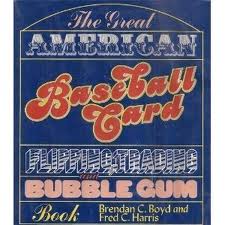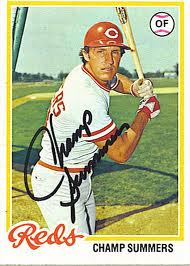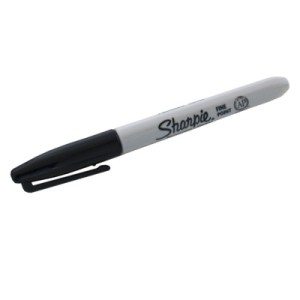
All that’s missing from the great Pinstripe Empire book is more of author Marty Appel. Ever the historian, Marty left himself out of his team history. However, the story of how an eager college kid could become part of a fabled franchise is worth another book. In today’s blog, Marty shares that story:
Q: You got your first Yankees job with a letter to public relations director Bob Fishel. We love good baseball letters. What did you write — and did you write other teams?
A: As I recall, it was just a one-pager explaining that I was editor of my college newspaper, a great baseball fan, had won a Yankees Scorecard contest the year before, and I was seeking a summer doing pretty much doing anything. I didn’t use the word intern. It was the only team I wrote to.
Q: I’ve read that you started in the front office by handling Mickey Mantle’s fan mail?
A: That was true; technically it was fan mail for the team, but Mick’s was 95% of it. This was 1968 – people didn’t realize we had a second “future Hall of Famer” on the roster, so Bobby Cox, our third baseman, got very little. Most of the letters just asked for an autographed baseball, and few included SASEs. The Yankees paid the postage, and most people got printed material back – a signature on a picture of Mick, folded.
Q: Did you collect autographs as a kid? Did you ever send fan mail?
A: I was never an autograph collector, although that first summer I worked there, I did get a few of people I came to know well. Ruben Amaro, Rocky Colavito, Horace Clarke, Ralph Houk, Frank Crosetti…..but I’m still not much of a collector.
Q: During your PR stint, fans and collectors saw you recognize ALL the members of the organization in publications and otherwise. What other fan-friendly measures are you proudest of?
A: I think I did recognize that people like Bob Sheppard and Pete Sheehy were important figures – I put Pete in the team photo, I put Bob in the yearbook. I did some other little things that still exist in baseball over my time in the game. For instance, media guides that show players year-by-year records – I put All Star Games as showing where played, as opposed to saying, “American, American, American, American….” under team. And for post-season series, I put “opponent” rather than “New York, New York, New York, New York,” to make it easier to say, “oh, THAT series.” Some of it has reverted back to old ways, but it was a nice innovation when I did it. One thing I never managed to make standard was my attempt to list “Raised” where it says Place of Birth, and Residence. A lot of guys were born in a city, moved at age 3, and their real hometowns are never shown. If fans knew where guys grew up, went to high school, etc., it would add new interest geographically.
Q: Did you see fan mail and the hobby market change during your work with the Yankees?
A: Fan mail never waned until this current age of electronic mail, and of course, mail being forwarded to “services” offering items for sale. It was always high in the ’70s and ’80s. It would increase as star players came in. Bobby Murcer got a lot of mail when he arrived.
One thing that sort of faded during my time there was “fan clubs.” SPORT Magazine used to list some you could join. I was in the Bobby Richardson Fan Club when I was young. Membership cards, newsletters, exclusive photos. It probably cost $3 a year, although I don’t remember for sure. Those were fun.
Q: Were you ever on a card, even by accident? When collectors find you, do they ask for autographs on things besides your books?
A: Occasionally I would be in the background of a photo as a team spokesman. I’m in a few of the shots at Catfish Hunter’s signing. Recently someone sent me a photo from a Baseball Writers’ Dinner Journal which had a picture of Ron Blomberg, me, and our wives seated at a table. I was happy to sign, but I am always a little bemused by why anyone would want my signature. In a book, I do understand that; I’ve gotten authors to sign books. I’m always happy to sign those; proud, in fact.
Q: For your latest book, how did you work with current and former Yankees?
8. Pinstripe wasn’t meant as an oral history, so I didn’t set out to get long form interviews. If there was an event that I was writing about, and I could find a player involved in that event, call him and get a fresh quote, that would be a mission for the day. But at 620 pages, it was long enough without adding interviews. Finding long buried quotes was good too, like many from people who were on the field for Babe Ruth’s “called shot.” I snuck in a few gems though. Roy White gave me the name of the street gang he was a member of in Compton, California. I said, “street gang? You? What were you, the recording secretary?”
Q: I met Hank Bauer at a Portland card show in the late 1980s. I asked him questions about clubhouse dynamics at a reception. The next day, the show organizer said Bauer was worried I was writing a book! Did you have former Yankees worried about what you knew — and might share?
A: Because I had nice personal relationships with almost everyone I spoke to, and because they DID know I was writing a book, I didn’t have any problems such as you describe with Hank Bauer. But I think you wound up better than the guy in the men’s room at the Copa who encountered Bauer there in ’57.
Q: What’s the next baseball book by Marty Appel?
A: Not ready to announce the next book project yet, hopefully soon
Thank you, Marty. Baseball history is a better place with you in it!
Coming Monday: The Tigers lose a “Champ.”





